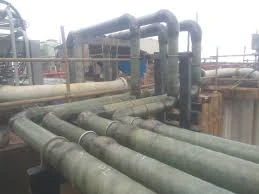
-
 Afrikaans
Afrikaans -
 Albanian
Albanian -
 Amharic
Amharic -
 Arabic
Arabic -
 Armenian
Armenian -
 Azerbaijani
Azerbaijani -
 Basque
Basque -
 Belarusian
Belarusian -
 Bengali
Bengali -
 Bosnian
Bosnian -
 Bulgarian
Bulgarian -
 Catalan
Catalan -
 Cebuano
Cebuano -
 China
China -
 China (Taiwan)
China (Taiwan) -
 Corsican
Corsican -
 Croatian
Croatian -
 Czech
Czech -
 Danish
Danish -
 Dutch
Dutch -
 English
English -
 Esperanto
Esperanto -
 Estonian
Estonian -
 Finnish
Finnish -
 French
French -
 Frisian
Frisian -
 Galician
Galician -
 Georgian
Georgian -
 German
German -
 Greek
Greek -
 Gujarati
Gujarati -
 Haitian Creole
Haitian Creole -
 hausa
hausa -
 hawaiian
hawaiian -
 Hebrew
Hebrew -
 Hindi
Hindi -
 Miao
Miao -
 Hungarian
Hungarian -
 Icelandic
Icelandic -
 igbo
igbo -
 Indonesian
Indonesian -
 irish
irish -
 Italian
Italian -
 Japanese
Japanese -
 Javanese
Javanese -
 Kannada
Kannada -
 kazakh
kazakh -
 Khmer
Khmer -
 Rwandese
Rwandese -
 Korean
Korean -
 Kurdish
Kurdish -
 Kyrgyz
Kyrgyz -
 Lao
Lao -
 Latin
Latin -
 Latvian
Latvian -
 Lithuanian
Lithuanian -
 Luxembourgish
Luxembourgish -
 Macedonian
Macedonian -
 Malgashi
Malgashi -
 Malay
Malay -
 Malayalam
Malayalam -
 Maltese
Maltese -
 Maori
Maori -
 Marathi
Marathi -
 Mongolian
Mongolian -
 Myanmar
Myanmar -
 Nepali
Nepali -
 Norwegian
Norwegian -
 Norwegian
Norwegian -
 Occitan
Occitan -
 Pashto
Pashto -
 Persian
Persian -
 Polish
Polish -
 Portuguese
Portuguese -
 Punjabi
Punjabi -
 Romanian
Romanian -
 Russian
Russian -
 Samoan
Samoan -
 Scottish Gaelic
Scottish Gaelic -
 Serbian
Serbian -
 Sesotho
Sesotho -
 Shona
Shona -
 Sindhi
Sindhi -
 Sinhala
Sinhala -
 Slovak
Slovak -
 Slovenian
Slovenian -
 Somali
Somali -
 Spanish
Spanish -
 Sundanese
Sundanese -
 Swahili
Swahili -
 Swedish
Swedish -
 Tagalog
Tagalog -
 Tajik
Tajik -
 Tamil
Tamil -
 Tatar
Tatar -
 Telugu
Telugu -
 Thai
Thai -
 Turkish
Turkish -
 Turkmen
Turkmen -
 Ukrainian
Ukrainian -
 Urdu
Urdu -
 Uighur
Uighur -
 Uzbek
Uzbek -
 Vietnamese
Vietnamese -
 Welsh
Welsh -
 Bantu
Bantu -
 Yiddish
Yiddish -
 Yoruba
Yoruba -
 Zulu
Zulu
Exploring the Benefits and Applications of FRP Sheets in Modern Construction
Understanding FRP Sheets A Comprehensive Overview
Fiber Reinforced Plastic (FRP) sheets have emerged as a significant material in various industries due to their impressive strength-to-weight ratio, durability, and corrosion resistance. As innovations in material science advance, FRP sheets are gaining momentum in applications ranging from construction to marine engineering. This article delves into the fundamental aspects of FRP sheets, including their composition, manufacturing process, advantages, and diverse applications.
Composition and Structure
FRP sheets are composed of a polymer matrix reinforced with fibers, which can be made from several materials, including glass, carbon, aramid, or natural fibers. The choice of fiber significantly influences the mechanical properties and overall performance of the FRP sheet. Glass fibers are the most common for general purposes, while carbon fibers provide superior tensile strength and are ideal for high-performance applications.
The polymer matrix, typically polyester, epoxy, or vinyl ester, serves to bind the fibers together and protects them from environmental damage. The combination of carefully selected fibers and matrices results in a composite material that exhibits excellent mechanical properties, such as tensile strength, impact resistance, and flexibility, making FRP sheets a favorable option for many applications.
Manufacturing Process
The production of FRP sheets primarily involves two processes hand layup and automated methods like pultrusion or resin transfer molding (RTM). In the hand layup process, layers of reinforcement fabric are saturated with resin and laid in molds, allowing for a high degree of customization. However, this method can be labor-intensive and may not always ensure uniform quality.
Understanding FRP Sheets A Comprehensive Overview
Advantages of FRP Sheets
frp sheet

One of the primary advantages of FRP sheets is their lightweight nature, which can be up to five times lighter than steel. This property translates into easier handling and reduced transportation costs. Additionally, FRP sheets exhibit remarkable resistance to corrosion and environmental degradation, outlasting traditional materials like metal and wood in harsh conditions, including chemical exposure and extreme weather.
Furthermore, FRP sheets are customizable in terms of thickness, color, and surface finish, making them versatile for aesthetic and functional applications. Their high strength-to-weight ratio allows for the design of lighter structures without compromising safety and integrity.
Applications Across Industries
FRP sheets are utilized in a myriad of industries, showcasing their versatility. In the construction sector, they are used for roofing, cladding, and structural components due to their durability and light weight. The automotive and aerospace industries benefit from FRP sheets to reduce vehicle weight and enhance fuel efficiency.
Moreover, in the marine industry, FRP sheets are ideal for constructing boats and other vessels because of their resistance to water, rot, and marine organisms. Even in the electrical sector, FRP sheets serve as insulating materials.
In recent years, the use of FRP sheets has expanded into renewable energy, with applications in wind turbine blades and solar panel mounts, reflecting the growing demand for sustainable solutions in engineering.
Conclusion
In summary, FRP sheets are a transformative material that combines strength, durability, and versatility. As technology progresses and industries seek innovative alternatives to traditional materials, the role of FRP sheets is likely to expand further, marking a significant shift in material application practices across various sectors. Whether in construction, automotive, or renewable energy, the future of FRP sheets appears bright, promising efficiency and sustainability in engineering solutions.









